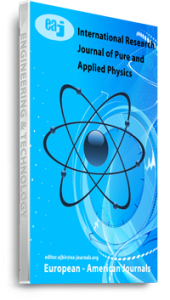The aim of this work is to synthesis and characterizes plasmonic photocatalyst. Plasmonic photocatalyst are promising technology for high-performance photocatalysis owing to the localized surface plasmon resonance (LSPR) of the plasmonic material. This study is therefore designed to incorporate plasmonic silver nanoparticles (AgNPs) on the TiO2 photocatalyst to improve the photo-response of the material. Plasmonic silver nanoparticles (AgNPs) was incorporated on screen-printed TiO2 using successive ionic layer adsorption and reaction (SILAR) technique with 0, 5, 8, 11, 14, and 17 SILAR cycles. The thickness, morphological and photo-response characteristics of the Ag-incorporated TiO2 photocatalyst were investigated using surface profilelometry, scanning electron microscope (SEM) and UV-Visible spectroscopy respectively. The thickness of the films increases with the increase in SILAR cycles. The scanning electron microscope (SEM) images reveal varied particle size distribution of the silver nanoparticles (AgNPs). Pure TiO2 film showed a homogenous film surface while Ag-incorporated TiO2 indicated sparkling nanoparticles with different sizes which confirms the presence of the silver nanoparticles (AgNPs). For Ag nanoparticles films on ordinary glass substrate, , the absorption peaks were observed at 439, 444, 466, 450, and 510 nm for 5, 8, 11, 14 and 17 SILAR cycles respectively. The material strongly absorbed light in the near UV and visible region but poor at the infrared region. There was a shift in the absorption towards longer wavelength when the SILAR cycles increased. At the same time, the optical bandgap of the films decreased as the SILAR cycles increased and extinction coefficient of the films also increased with the increase in the SILAR cycles. And for the Ag-incorporated TiO2, the optical absorption edges of Ag-incorporated TiO2 exhibit a remarkable redshift to the visible range when compared with the absorption edge of pure TiO2 (391 nm). The material showed an optical absorption improvement over the pure TiO2 with continuous and stronger absorption band in the visible range which can be attributed to the surface plasmon resonance (SPR) of Ag nanoparticles. Thus, the study has shown that the plasmonic photocatalyst has very efficient light absorption capability and great potential for improving many of the intrinsic limitations of conventional semiconductor photocatalysts.
Keywords: Silver Nanoparticles, Titanium (IV) Oxide., plasmonic photocatalyst

